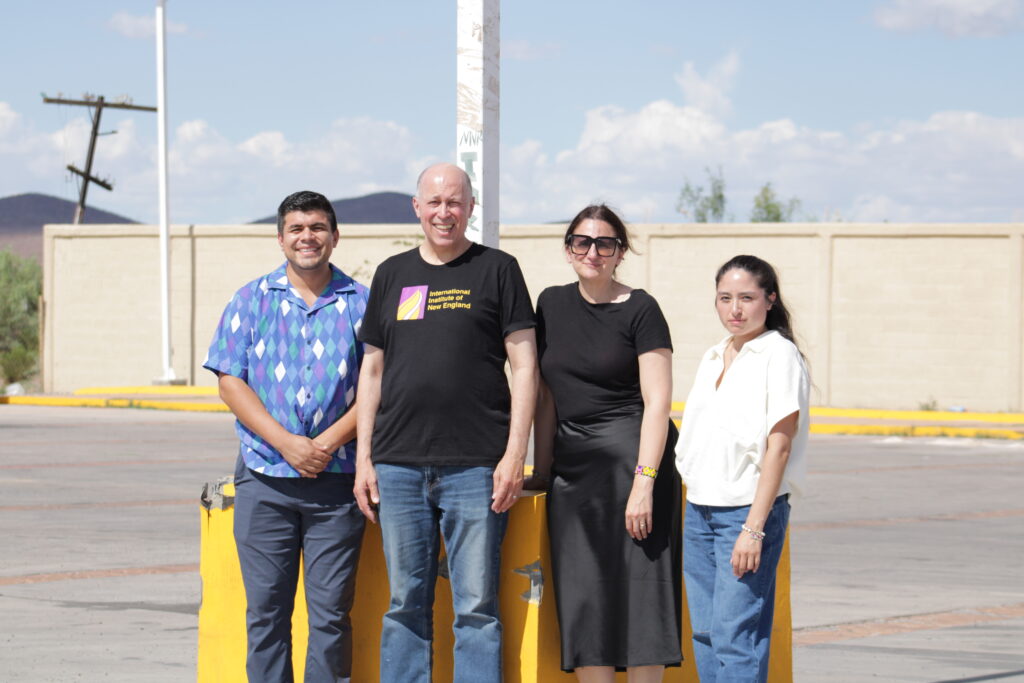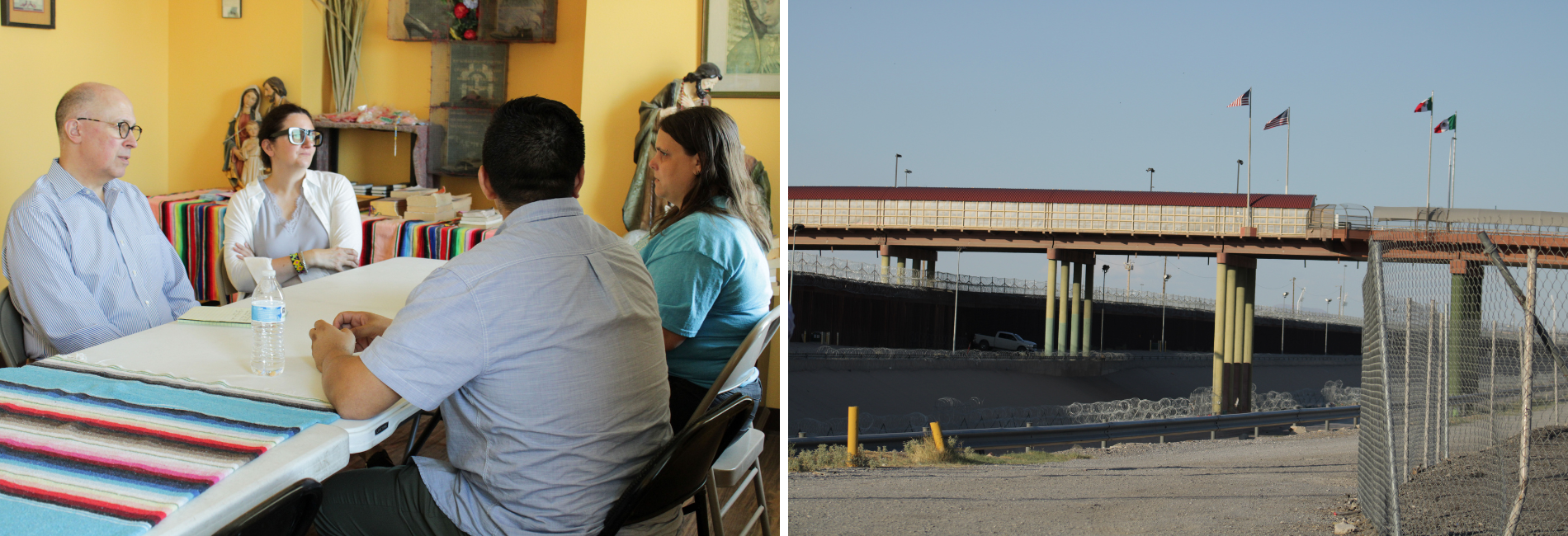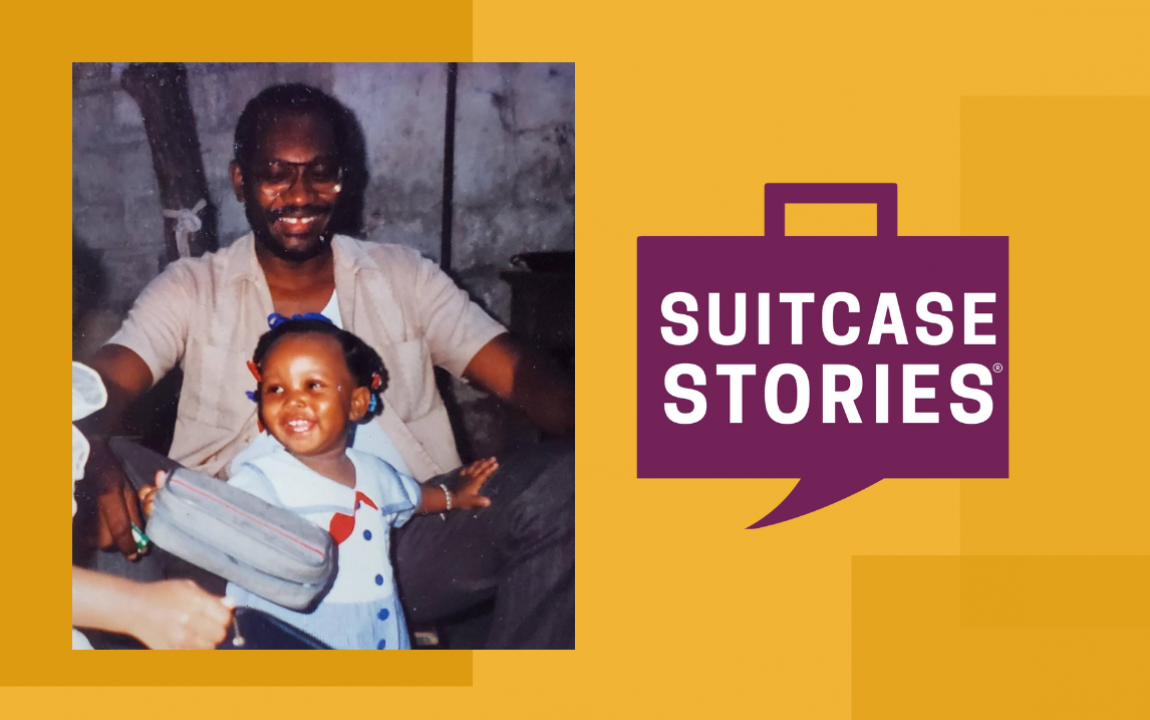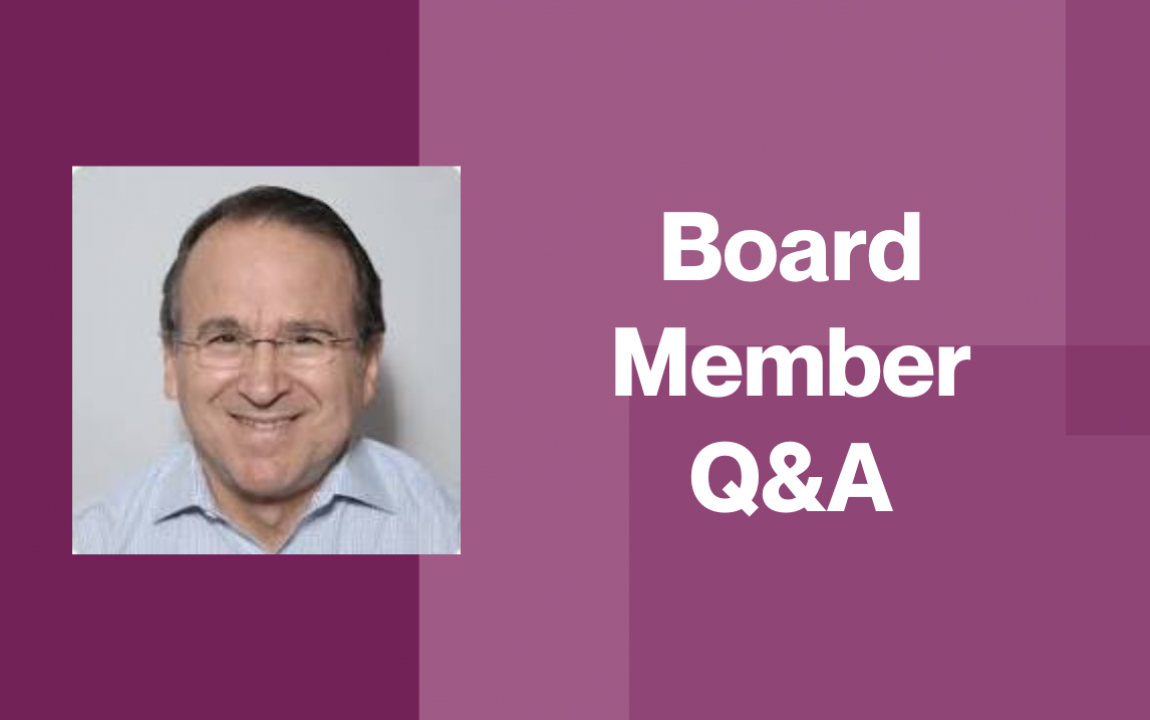From the Desk of the CEO: The Reality at the U.S.-Mexico Border
By Jeff Thielman, President and CEO at the International Institute of New England

In mid-July, I visited the border communities of El Paso, Texas and Ciudad Juárez, Mexico. The visit was an opportunity to learn first-hand about the challenges that asylum seekers, including the many who become IINE clients, experience when they attempt to enter the U.S.
I was joined by IINE SVP and Chief Advancement Officer Xan Weber (second from right), IINE Marketing Coordinator Christina Duran (far right), who herself grew up in a border community, and Aaron Nodjomian-Escajeda (far left), Senior Policy Analyst for the U.S. Committee for Refugees and Immigrants (USCRI), the national resettlement network of which IINE is a regional partner.
In Mexico, we met asylum seekers from Central and South America who were completing immigration applications on the Customs and Border Protection One (CBP-1) mobile app, with the help of staff from a human and legal services agency. Like many of our clients, they were hoping to join their family and members of their community here. 
We saw for ourselves that the U.S.-Mexico border—the most frequently crossed in the world—is far from chaotic, as it is so often depicted in the U.S. media. With shelters in Ciudad Juárez now at half their capacity, multiple advocates explained that the decrease in people traveling to the border to seek asylum is not due to better conditions in their home countries, but rather because of U.S. Executive Orders restricting crossings, and efforts by cooperative Mexican authorities to keep migrants in southern Mexico.
Ciudad Juárez and El Paso have vibrant and beautiful cultures. Many families have members in both cities, many work in one community and live in another, and we learned that there is an ethos of faith and community support on both sides for migrants making the journey north. Our group had a chance encounter with a woman from Mexico who was returning from a trip to see family in Denver. She shared that she and her husband had helped a Colombian family of eight to get to the border and eventually cross.
In Ciudad Juárez, we met with the leadership of an agency run by the Mexican state of Chihuahua to support migrants. After our meeting, we were able to sit with three migrants completing a CBP-1 application with help from the staff of a local NGO. One of them told us he had been forced to flee his home country after a criminal syndicate targeted his business. All of them told us they were fleeing difficult situations, had friends and family in the U.S., and were hoping to find any job they could to make ends meet.

We also met with the International Office of Migration, operated by the United Nations, and a field office of the International Rescue Committee. It was reassuring to see that, as with providers in New England, these groups talk with one another frequently, share ideas, and work collaboratively to help “people on the move,” who are seeking asylum. We also saw a tent city that houses migrants awaiting appointments to enter the U.S. and paused in silence when we walked to the site of a former Mexican detention facility where a deadly fire killed more than 40 migrants in 2023.
In El Paso, we encountered a network of organizations that help people after they cross the border, including Annunciation House, a faith-based emergency housing and service provider where some of our colleagues volunteered prior to joining IINE. Border patrol officers bring asylum seekers—usually those with a notice to appear before an immigration court—to “A House” for safety.
We learned about Border Servant Corps, a non-profit organization that works with CBP-1 applicants after they have been approved for admission to the U.S., and our group spoke with the Director of Advocacy and Legal Services of Las Americas Immigrant Advocacy Center, which serves hundreds of migrants each year. The staff we met were passionate and committed, just like our team at IINE. We also spent some time with the Director of the Center for Inter-American and Border Studies at the University of Texas at El Paso, who gave us an overview of the decades-long growth of a bureaucratic border protection system that has made it more dangerous and difficult for people to come to the U.S.
Finally, in El Paso, we met with the leadership of a shelter facility for Unaccompanied Children. We learned about the service social workers and educators do to support the children before they reunite with family and transition to IINE’s Home Study and Post Release Services program.
It was inspiring and humbling to see so many people stepping up to provide these different types of support—and how much need there is for their services.
The border is a place where deadlines and rules change frequently. Asylum seekers told us that they face more danger in Mexico, including kidnappings and the need to pay bribes, than they did crossing the Darien Gap—the infamously treacherous border territory between Colombia and Panama. Beyond danger and extortion, the U.S. CBP-1 mobile app is on its 26th version and continues to have technical glitches that can disrupt and delay an already complicated process.

It is jarring and confusing to see fences and walls between the U.S. and Mexico, especially after hearing advocates on both sides explain that the border security system has led to an increase in exploitation of migrants by bad actors in Mexico and a sometimes-deadly journey for legitimate asylum seekers hoping to receive protection in the U.S. What gives us hope, however small, is that asylum seekers and unaccompanied children are supported by a passionate network of NGOs, faith communities, and community groups.
Our field visit to the southern border reinforces our understanding of the critical role IINE plays in offering a warm, kind, and humane welcome to people who have fled terrible conditions and are fighting for their right to safety and basic derechos humanos—human rights.
This was IINE’s first of several planned field visits to better understand the experiences of our clients. Our findings will be captured in a publication to be released this fall, co-sponsored with USCRI, entitled, “Las Mariposas de la Frontera: Uplifting the Stories of Asylum Seekers at the U.S.-Mexico Border.”
Related Articles

Suitcase Stories®: Ishtar, a Haitian Immigrant, Shares Why She Came and Why She Stays

Q&A With New Board Member Richard Golob
